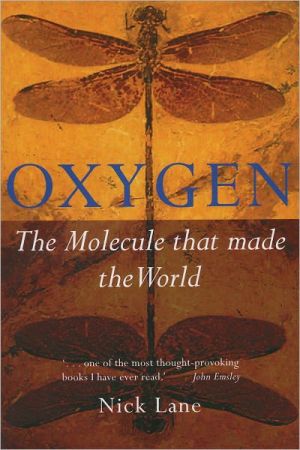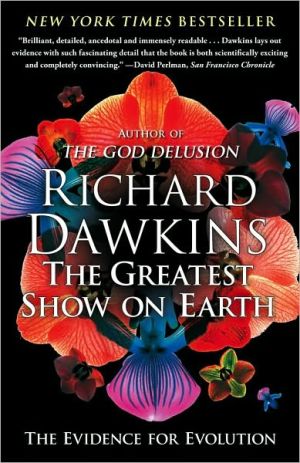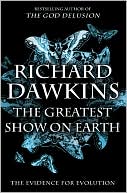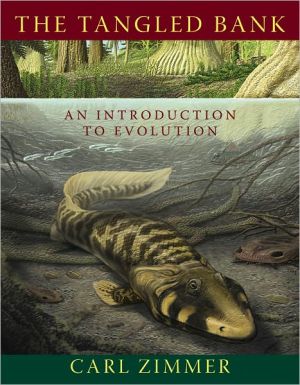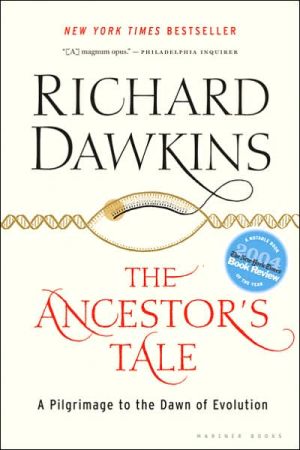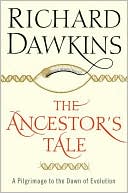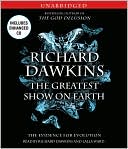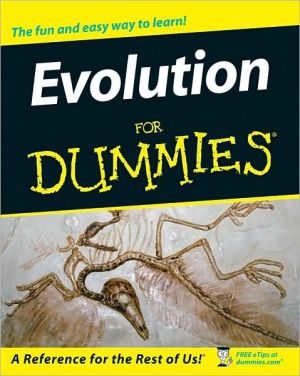Oxygen: The Molecule That Made the World
In Oxygen, Nick Lane takes the reader on an enthralling journey as he unravels the unexpected ways in which oxygen spurred the evolution of life and death. He shows how oxygen underpins the origin of biological complexity, the birth of photosynthesis, the sudden evolution of animals, the need for two sexes, the accelerated aging of cloned animals like Dolly the sheep, and the surprisingly long lives of bats and birds. Drawing on this grand evolutionary canvas, Oxygen offers fresh...
Search in google:
In Oxygen, Nick Lane takes the reader on an enthralling journey as he unravels the unexpected ways in which oxygen spurred the evolution of life and death. He shows how oxygen underpins the origin of biological complexity, the birth of photosynthesis, the sudden evolution of animals, the need for two sexes, the accelerated aging of cloned animals like Dolly the sheep, and the surprisingly long lives of bats and birds. Drawing on this grand evolutionary canvas, Oxygen offers fresh perspectives on our own lives and deaths, explaining modern killer diseases, why we age, and what we can do about it. Advancing revelatory new ideas, following chains of evidence, the book ranges through many disciplines, from environmental sciences to molecular medicine. The result is a captivating vision of contemporary science and a humane synthesis of our place in nature. This remarkable book will redefine the way we think about the world. Kirkus Reviews British biochemist Lane (University College, London) examines questions of life and death as seen through the lens of oxygen. The multidisciplinary text begins with Earth s primordial environment, in which the main source of atmospheric oxygen was the breakdown of water exposed to ultraviolet light. Much of this aboriginal oxygen either escaped into space or reacted with other elements to form mineral oxides. Early life evolved largely free of atmospheric oxygen, although LUCA, the Last Universal Common Ancestor of current life some 3.85 billion years ago, used oxygen to generate energy. The atmosphere began to gain large amounts of oxygen when certain cells learned to photosynthesize their food from carbon dioxide and water, with oxygen as a waste product. Shortly thereafter (in evolutionary terms) another type of cell developed the complementary strategy of respiration, which uses oxygen to extract energy from foods. But oxygen, as every chemist knows, is a dangerously reactive element. Living creatures make special efforts to avoid direct contact with it, using special enzymes, physical shielding, and other tricks to keep its concentration within their bodies at a safe level. Even sexual reproduction can be shown to be a partial defense against oxygen damage, especially in the restriction of mitochondria (which regulate the use of oxygen) to the cells donated by the mother. Damage to DNA caused by oxidative stress appears to explain aging and many of its diseases, hence the popularity in alternative health circles of antioxidants. But antioxidants alone fail to prevent aging. Lane suggests two different avenues of study: modulation of the immune system, which generates free radicals aspart of its defense against infectious diseases; and ways of improving the health of our cellular mitochondria, on which many age-related ailments seem to depend. Provocative and complexly argued.
1Introduction: Elixir of Life - and Death12In the Beginning: The Origins and Importance of Oxygen163Silence of the Aeons: Three Billion Years of Microbial Evolution294Fuse to the Cambrian Explosion: Snowball Earth, Environmental Change and the First Animals545The Bolsover Dragonfly: Oxygen and the Rise of the Giants766Treachery in the Air: Oxygen Poisoning and X-Irradiation: A Mechanism in Common1067Green Planet: Radiation and the Evolution of Photosynthesis1318Looking for LUCA: Last Ancestor in an Age Before Oxygen1479Portrait of a Paradox: Vitamin C and the Many Faces of an Antioxidant17110The Antioxidant Machine: A Hundred and One Ways of Living with Oxygen19411Sex and the Art of Bodily Maintenance: Trade-offs in the Evolution of Ageing21212Eat! Or You'll Live Forever: The Triangle of Food, Sex and Longevity23513Gender Bender: The Rate of Living and the Need for Sexes25214Beyond Genes and Destiny: The Double-Agent Theory of Ageing and Disease28315Life, Death and Oxygen: Lessons From Evolution on the Future of Ageing314Further Reading343Glossary360Index366
\ Kirkus ReviewsBritish biochemist Lane (University College, London) examines questions of life and death as seen through the lens of oxygen. The multidisciplinary text begins with Earth’s primordial environment, in which the main source of atmospheric oxygen was the breakdown of water exposed to ultraviolet light. Much of this aboriginal oxygen either escaped into space or reacted with other elements to form mineral oxides. Early life evolved largely free of atmospheric oxygen, although LUCA, the Last Universal Common Ancestor of current life some 3.85 billion years ago, used oxygen to generate energy. The atmosphere began to gain large amounts of oxygen when certain cells learned to photosynthesize their food from carbon dioxide and water, with oxygen as a waste product. Shortly thereafter (in evolutionary terms) another type of cell developed the complementary strategy of respiration, which uses oxygen to extract energy from foods. But oxygen, as every chemist knows, is a dangerously reactive element. Living creatures make special efforts to avoid direct contact with it, using special enzymes, physical shielding, and other tricks to keep its concentration within their bodies at a safe level. Even sexual reproduction can be shown to be a partial defense against oxygen damage, especially in the restriction of mitochondria (which regulate the use of oxygen) to the cells donated by the mother. Damage to DNA caused by oxidative stress appears to explain aging and many of its diseases, hence the popularity in alternative health circles of antioxidants. But antioxidants alone fail to prevent aging. Lane suggests two different avenues of study: modulation of the immune system, which generates free radicals aspart of its defense against infectious diseases; and ways of improving the health of our cellular mitochondria, on which many age-related ailments seem to depend. Provocative and complexly argued.\ \
